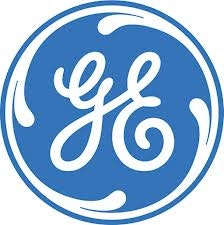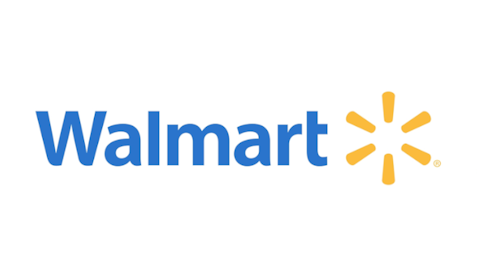More and more governments are looking to use light emitting diodes (LEDs) in place of incandescent (Edison) and florescent lights. While florescent lights were a big step up from Edison lights, LEDs are even better. There are a few big companies worth looking at in this still emerging space as it inches toward the main stream consumer.
Lights

Florescent bulbs conduct electricity across a gas filled chamber, causing the gas to emit energy. That energy then causes a powder on the inside of the chamber to light up. This is much more efficient than incandescent lighting, but only recently has the technology been used to create bulbs that would fit Edison style sockets, which represent the vast majority of the “installed” lighting base. The biggest problem with these florescent bulbs, however, is their disposal, since the gas and powder inside can be dangerous. That said, the bulbs last much longer than their predecessor.
The new kid on the block is the LED light bulb. These bulbs are actually a collection of light emitting diodes crammed into a small space. Without getting into the scientific details, they use semiconductors to create light energy and are far more efficient than either of the other two options, producing more light and materially less heat. Still relatively new, they are far more expensive then incandescent or florescent bulbs.
Part of the cost issue with LEDs is because these lights are semiconductor based products, not just a wire being heated up or gas and a fine powder with a current going across it. LED light bulbs are pretty technically complex and the materials are simply more costly. That hasn’t stopped their advance.
Lighting for Bridges and Tunnels
While the cost savings for individuals may not be enough for people to make the switch to LED lights for their homes; places with lots of lights are already shifting to LEDs. For example, the Holland Tunnel and George Washington Bridge are either using or in the process of switching to LED lights. The Port Authority of New York and New Jersey estimates that using LEDs in the Holland Tunnel alone will save more than $250,000 a year and reduce maintenance costs. No wonder the switch is being made.
Some Companies in the Space
Koninklijke Philips Electronics NV (NYSE:PHG)
Philips gets notable public relations marks for lighting the Times Square Ball. Thirty two thousand two hundred fifty six of the company’s commercially-available LUXEON LED bulbs were used, which the company claims use 80% less energy than an Edison style bulb. Clearly, the company believes its lighting products are ready for the main stream and has made several acquisitions in recent years to bolster its technology and industry position. It recently realigned the lighting segment, among others, to better serve customers.
That said, Philips, based in the Netherlands, is far more than just a lighting company. It describes itself as a “diversified health and well-being company.” The company highlights its offerings is the health care, lighting, and consumer product areas. It is a large and well established company with a long history of quality products, particularly in the lighting space. With a recent dividend yield of nearly 3%, it is a fairly direct play on the future of lighting.
General Electric Company (NYSE:GE)
GE is one of the largest industrial conglomerates in the world. Its business is focused around a handful of segments that management believes hold material long-term value: Energy Infrastructure, Aviation, Healthcare, Transportation, and Home & Business Solutions. The company’s GE Capital financial unit is still a major part of the business, too, despite the fact that this division nearly brought the company down in the 2007 to 2009 financial led recession.
During the recession GE’s dividend, after years of regular increases, was cut and the stock price fell precipitously. That said, the company has been doing far more right of late, including a shift back to dividend increases. While not for the risk averse, largely because of the still notable reliance on GE Capital, a recent yield well over 3% might entice more aggressive investors.
General Electric is also making acquisitions in the lighting space to expand its presence. Moreover, it has scored notable LED sales have from far off lands like Indonesia, Hungary, and Malaysia. Closer to home, the Borough of Tarentum in Pennsylvania (population 4,500) is converting 100 percent of its street lighting to GE systems, saving up to $40,000 a year. Clearly, GE is in this game in a big way.
Some Companies
Not in the Space
Two other companies that will likely be impacted by LEDs in the future will be The Home Depot, Inc. (NYSE:HD) and Lowe’s Companies, Inc. (NYSE:LOW). Both are major hardware stores serving both the professional and individual markets. A quick walk into either store will reveal large lighting sections. The housing slump and recession took a toll on sales at these two companies, however, a big push into the housing market by companies like The Blackstone Group L.P. (NYSE:BX), suggest that we might be at the start of a housing turnaround.
If so, remodeling activity will likely increase as people spruce up new homes and rehab old ones to increase sales values. With LED technology finally hitting the mainstream, more and more projects will likely include the technology because it is the “best in class” option. Particularly if companies on the scale of Blackstone do renovations across massive single family home portfolios.
Since new technology usually carries higher margins, the sales mix in Home Depot and Lowe’s lighting segments is likely to improve. This will help results at both companies, though probably not materially enough to really move the earnings needle. While not nearly as direct a play as Philips or GE, this is an indirect, and perhaps safer, way to benefit from increasing LED sales.
The Future is Bright
LEDs are, at the moment, the clear winner in the lighting arena. As time progresses and costs come down, they are likely to push out Edison bulbs and florescent bulbs. Since many have already switched to fluorescents, with their relatively long lives, the shift to LEDs should have a long arc, giving investors plenty of time to benefit.
Yours,

The article LED Light For All originally appeared on Fool.com and is written by Reuben Gregg Brewer.
Copyright © 1995 – 2013 The Motley Fool, LLC. All rights reserved. The Motley Fool has a disclosure policy.





